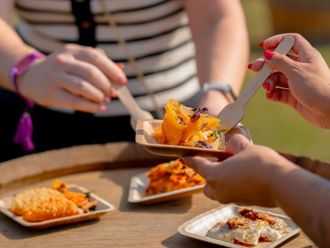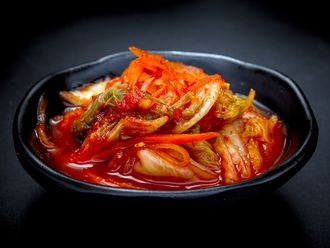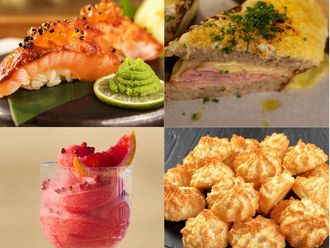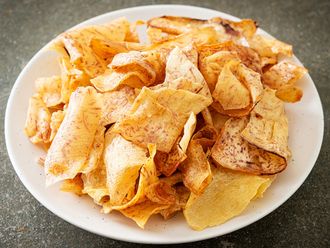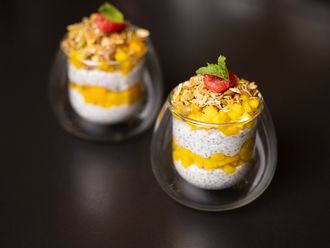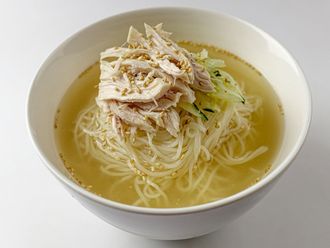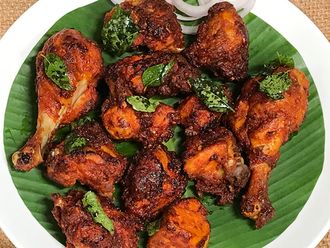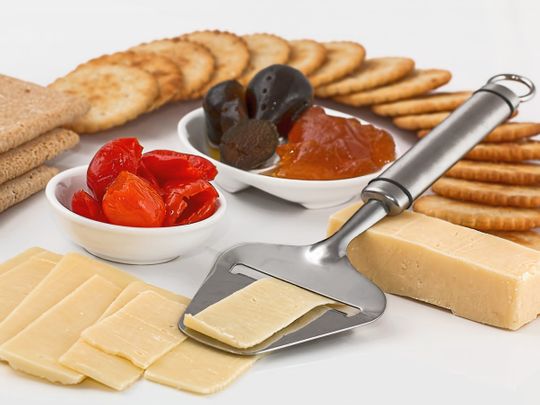
In my misspent youth, I mainlined Dairylea. I will still happily wolf the cheapest cheddar. With its killer combination of fat, salt and umami, it is impossible to be a snob about cheese. It’s all good. In some way.
But is it fit for purpose? You wouldn’t put Lincolnshire Poacher in your kids’ sandwiches nor Primula on a cheeseboard. Context is everything. For instance, at home, you might like to eat Wensleydale with cranberries. I have no idea why you might, but hey, it’s your life. However, when eating out, when paying £5-£10 (Dh29-Dh58) for a cheeseboard, I don’t expect to be served novelty cheese. A restaurant should be purchasing with more discretion. It should be aiming for cheeseboard perfection.
Which is what? Six to eight artisan cheeses, an even mix of hard and semi-hard, with at least one soft and one blue (more than one third blue, given how many people don’t like it, is bad planning, if not bad manners). I also like this idea of ensuring variety by serving at least one goat’s, ewe’s and cow’s milk cheese. All British cheeses too, please. This is one area where you can minimise food miles without compromising on quality.
Cheeses which have no place here:
Feta, halloumi, added-fruit cheeses, mozzarella, parmesan, ricotta, herbed goats’ cheese, Babybel, edam, brunost, cheeses that amalgamate different cheeses in one block, most (overpowering, acrid) smoked cheeses.
Biscuits, bread and butter
If ever an area of life encapsulated the tyranny of choice, it is cheese biscuits. Olive oil and sea salt; chive and rosemary; poppy seed; roast onion and sesame; cheese melts; oat and thyme squares; charcoal biscuits; smoked biscuits; kibbled wheat and rye. This bewildering, nay oppressive, ever-expanding selection is, literally and figuratively, crackers.
The cheese biscuit’s primary function is as a delivery vehicle for cheese. With their gaudy herbs and flashy seasoning, flavoured biscuits distract us from said cheese and embroil us in world of cheap sensation. Within its elaborate biscuits range, the Fine Cheese Company has a line of “all-butter neutrals ... because some people like their cheese naked”, that description hinting at a peculiar eccentricity. That is how far we have strayed.
I propose a moratorium. Baked crackers, water biscuits and (when you need an earthy anchor for a strong blue) oat biscuits are perfectly adequate. Others may hanker after a sweet digestive, but, to me, digestives are ironically indigestible when paired with cheese. Certain hard cheeses require a buttered biscuit, too. They need that lubrication.
And bread? Too filling. Even those thin slivers of fruity, nutty stuff you get in swanky restaurants. Those flavours can be better achieved with other add-ons.
Accompaniments
It’s a sorry cheeseboard that doesn’t involve varied extras. For instance, a piece of sharp, dry Lancashire eaten with rich, dark fruit cake is one of life’s great gastronomic rollercoasters. But what works?
Properly trimmed celery is, perhaps, the ultimate palate-cleanser; a necessary burst of freshness. I’m agnostic about sliced apple. I acknowledge the theory — many hard cheeses evolve a pungent third taste when partnered with something sweet and fruity — but too few apples taste of enough for it to work. Frozen grapes are fine, but again more as a palate-cleanser. Dried apricots aren’t a natural match. Quince paste, likewise, despite its present popularity, is best eaten as membrillo with manchego.
No, on a British cheeseboard two things work reliably: cake (fruit cake or something with seeds and nuts involving figs, maybe) and chutney. Fresh fruit can be a bit very hit and miss (unripened pears, anyone?) but, as long as they’re not too sweet or too punchy, chutneys fulfil that role reliably. Two or three seems like a good selection, one mellow (caramelised onion), sharp (rhubarb), one either fruity (apple) or fresh (tomato). Controversially, I’d also add sliced tomato if serving good cheddar.
Beyond that, tread carefully. Walnuts? With stilton, perhaps. General mixed nuts, though, while their irony nuttiness may seem welcome, are too much of a mouthful with cheese. Redcurrants or strawberries only look “good” in a 1970s cookery book way, and add nothing taste-wise. Drizzling honey on cheese that anyone else might eat seems presumptive. As for olives, sun-dried tomatoes and tapenade: what is this, antipasti?!
Size and temperature
For each person, 30-40g / 4x4cm pieces of six cheeses may look mean, but it’s plenty. You want tastes, not great hunks which will leave you groaning and immobile. Crucially, serve your cheese at room temperature.
Implements
Other than cutlery manufacturers, does anyone think cheese knives are essential? Often dinky, dumpy and difficult to handle, they do nothing, in any meaningful sense, that a sharp, medium-sized kitchen knife couldn’t. Even rotating blades such as the Girolle (only invented in 1982), merely mimic what people once achieved with a knife. You do need multiple knives, however, to avoid blue/strong cheese cross-contamination. In terms of cutting etiquette, there are people here who would give you daggers if you cut the nose off a shared brie or left your rinds behind. And you’d deserve it.
Serving style
Plate? Slate? Wooden board? The raised lip makes cutting cheese on a plate, particularly a crammed plate, difficult. Slate can be slippy. Wood has faults (like slate, it will get tacky with soft cheese), but there is something aesthetically and practically satisfying about a large wooden chopping board arraigned with cheeses, “extras” and a few sharp knives which, it being wooden, you can use with impunity.
A (near) perfect cheeseboard?
Mrs Kirkham’s Lancashire, Sparkenhoe, Swaledale, Ragstone, Wigmore, Stinking Bishop, Perl Las. Cream crackers/oat biscuits, optional butter. Two chutneys, fruit cake, celery and (stealing an idea from the Freemason’s Arms, Wiswell) a shooter glass of apple juice.
Cheese and biscuits, then. How do you eat yours?
— Guardian News and Media Limited



